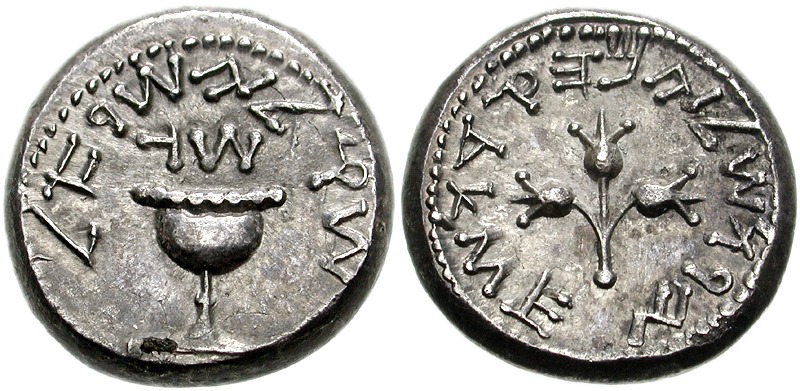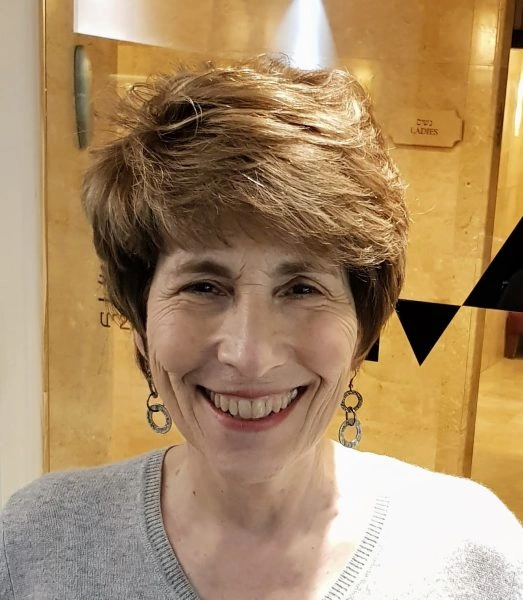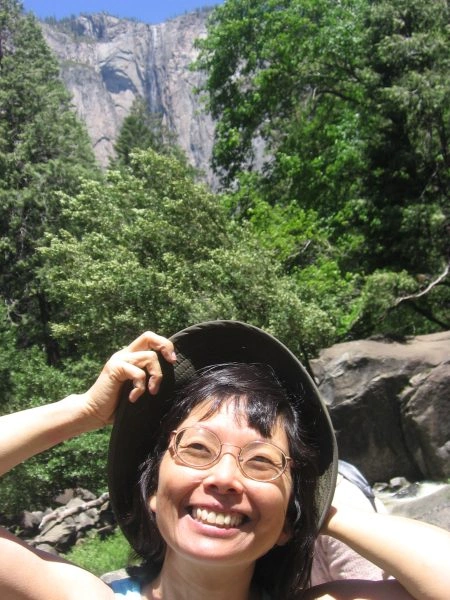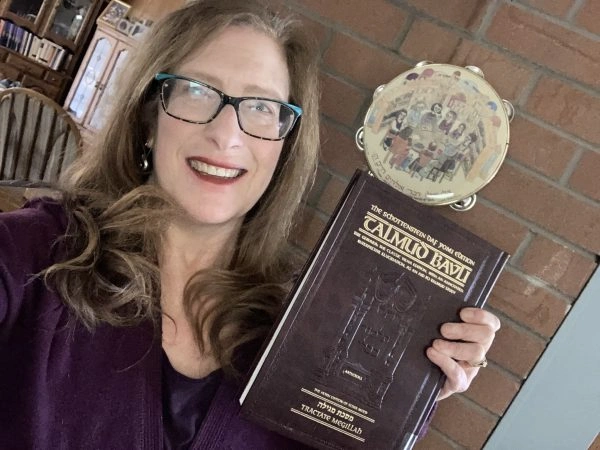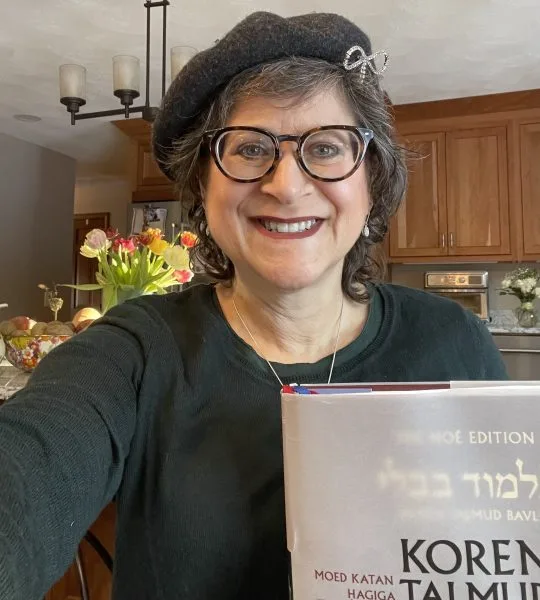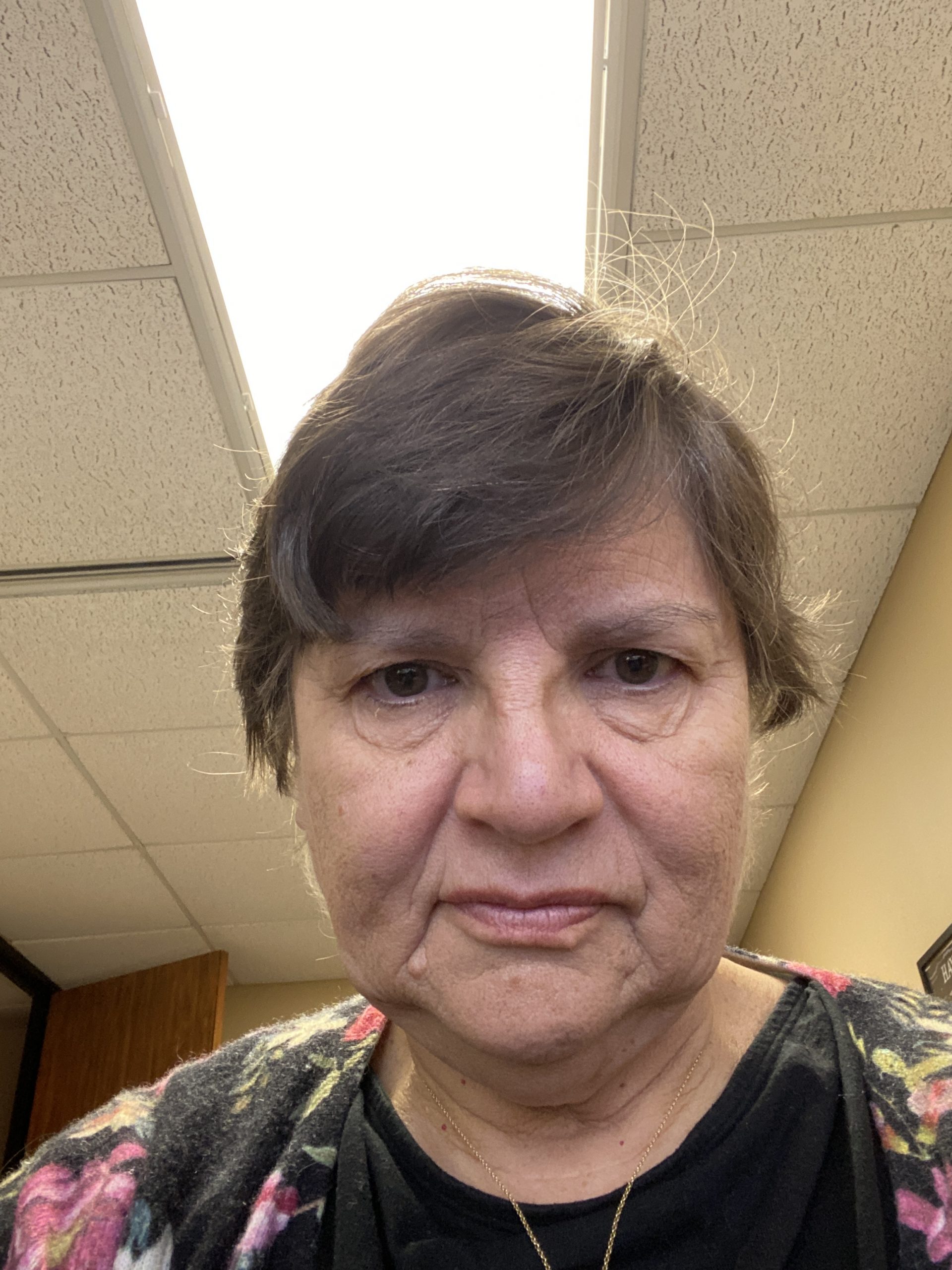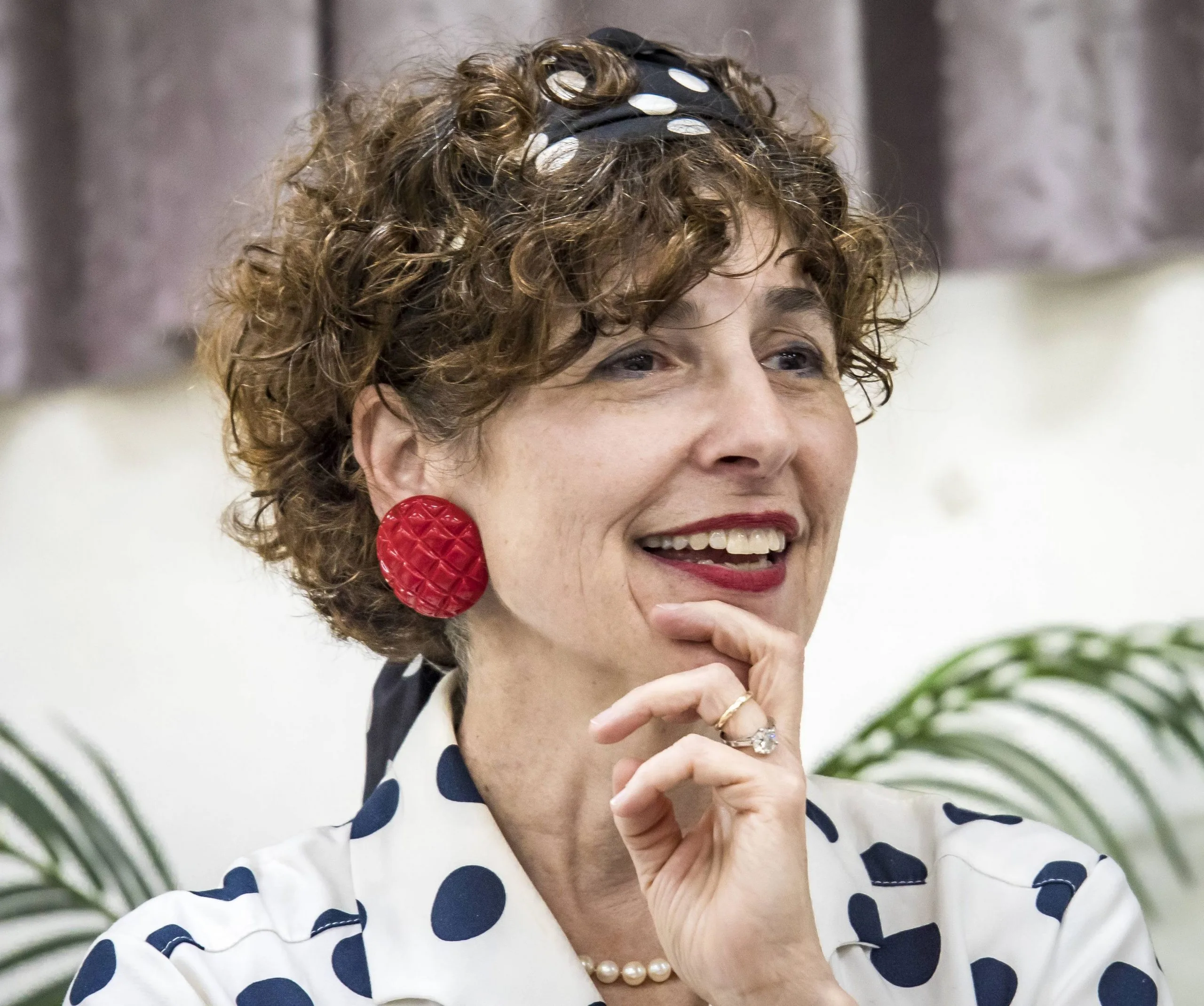Shabbat 65
שׁוֹטְחָן בַּחַמָּה, אֲבָל לֹא כְּנֶגֶד הָעָם. רַבִּי אֱלִיעֶזֶר וְרַבִּי שִׁמְעוֹן אוֹסְרִין.
One whose clothes fell into water on a Festival may not dry them in the conventional manner; however, he may spread them out in the sun, but not before the people, who may suspect that he laundered his clothes on Shabbat. Rabbi Eliezer and Rabbi Shimon prohibit doing so even in a place concealed from view. Apparently, the Sages disagree whether or not an action prohibited due to the appearance of prohibition is prohibited everywhere.
וּבְמוֹךְ שֶׁבְּאׇזְנָהּ. תָּנֵי רָמֵי בַּר יְחֶזְקֵאל: וְהוּא שֶׁקָּשׁוּר בְּאׇזְנָהּ.
We learned in the mishna that a woman may go out on Shabbat with a cloth that is in her ear. Rami bar Yeḥezkel taught: And that is specifically in a case where the cloth is tied to her ear and she will not come to carry it.
וּבְמוֹךְ שֶׁבְּסַנְדָּלָהּ. תָּנֵי רָמֵי בַּר יְחֶזְקֵאל: וְהוּא שֶׁקָּשׁוּר לָהּ בְּסַנְדָּלָהּ.
The mishna continues: A woman may go out with a cloth that is in her sandal. Rami bar Yeḥezkel taught: And that is specifically in a case where the cloth is tied to her sandal.
וּבְמוֹךְ שֶׁהִתְקִינָה לָהּ לְנִדָּתָהּ. סָבַר רָמֵי בַּר חָמָא לְמֵימַר, וְהוּא שֶׁקָּשׁוּר לָהּ בֵּין יְרֵיכוֹתֶיהָ. אָמַר רָבָא: אַף עַל פִּי שֶׁאֵינוֹ קָשׁוּר לָהּ, כֵּיוָן דִּמְאִיס לָא אָתְיָא לְאֵיתוֹיֵי.
We learned in the mishna: A woman may go out with a cloth that she placed due to her menstrual flow. Rami bar Ḥama considered saying that it is permitted specifically in a case where it is tied between her thighs. Rava said: It is permitted even though it is not tied to her; since it is repulsive, she will not come to carry it even if it falls.
בְּעָא מִינֵּיהּ רַבִּי יִרְמְיָה מֵרַבִּי אַבָּא: עָשְׂתָה לָהּ בֵּית יָד, מַהוּ? אֲמַר לֵיהּ: מוּתָּר. אִיתְּמַר [נָמֵי], אָמַר רַב נַחְמָן בַּר אוֹשַׁעְיָא אָמַר רַבִּי יוֹחָנָן: עָשְׂתָה לָהּ בֵּית יָד — מוּתָּר.
Rabbi Yirmeya raised a dilemma before Rabbi Abba: If she made herself a handgrip in which she could hold the cloth, what is the halakha? Since she does not have to touch the cloth with her bare hand, is there concern that she will come to carry it or not? He said to him: It is permitted. It was also stated that Rav Naḥman bar Oshaya said that Rabbi Yoḥanan said: If she made herself a handgrip it is permitted.
רַבִּי יוֹחָנָן נָפֵיק בְּהוּ לְבֵי מִדְרְשָׁא, וַחֲלוּקִין עָלָיו חֲבֵרָיו. רַבִּי יַנַּאי נָפֵיק בְּהוּ לְכַרְמְלִית, וַחֲלוּקִין עָלָיו כׇּל דּוֹרוֹ. וְהָתָנֵי רָמֵי בַּר יְחֶזְקֵאל: וְהוּא שֶׁקָּשׁוּר לָהּ בְּאׇזְנָהּ! לָא קַשְׁיָא: הָא דְּמִיהַדַּק, הָא דְּלָא מִיהַדַּק.
Rabbi Yoḥanan went out with a cloth in his ear to the study hall on Shabbat, and his colleagues are in disagreement with him and rule that it is prohibited to do so because it was not tied to his ear. Rabbi Yannai went out with it, a cloth in his ear, to a karmelit, an intermediate domain, neither public nor private. And all the Sages of his generation are in disagreement with him. The Gemara asks: Didn’t Rami bar Yeḥezkel teach: And that is specifically in a case where the cloth is tied to her ear? How could these Sages ignore this halakha? The Gemara answers: This is not difficult; this, where it was taught that certain Sages went out with a cloth, is in a case where it was stuck tightly in their ears. Therefore, it was permitted even though it was not tied. That, where Rami bar Yeḥezkel said that going out with a cloth is permitted only when it is tied, is in a case where it was not stuck tightly in his ear.
בַּפִּלְפֵּל וּבְגַלְגַּל מֶלַח. פִּלְפֵּל לְרֵיחַ הַפֶּה, גַּלְגַּל מֶלַח לְדוּרְשִׁינֵּי. וְכׇל דָּבָר שֶׁנּוֹתֶנֶת לְתוֹךְ פִּיהָ. זַנְגְּבִילָא, אִי נָמֵי דָּרְצוּנָא.
We learned in the mishna: A woman may go out with pepper and with a grain of salt in her mouth. The Gemara explains: She places pepper in her mouth to prevent mouth odor and a grain of salt to treat a toothache. With regard to that which we learned in the mishna: A woman may go out on Shabbat with any thing that she places in her mouth: This refers to ginger or, alternatively, to cinnamon [dartzona].
שֵׁן תּוֹתֶבֶת שֵׁן שֶׁל זָהָב, רַבִּי מַתִּיר וַחֲכָמִים אוֹסְרִין. אָמַר רַבִּי זֵירָא לֹא שָׁנוּ אֶלָּא שֶׁל זָהָב, אֲבָל בְּשֶׁל כֶּסֶף דִּבְרֵי הַכֹּל מוּתָּר. תַּנְיָא נָמֵי הָכִי: בְּשֶׁל כֶּסֶף דִּבְרֵי הַכֹּל מוּתָּר. שֶׁל זָהָב, רַבִּי מַתִּיר וַחֲכָמִים אוֹסְרִין.
We learned in the mishna that the Sages disagree whether or not a woman may go out on Shabbat with a false tooth and a gold tooth; Rabbi Yehuda HaNasi permits doing so and the Rabbis prohibit doing so. Rabbi Zeira said: They only taught the dispute with regard to a gold tooth. Since it is precious, she might remove it from her mouth to show her friends and come to carry it. However, with regard to a silver tooth, which is less precious, there is no concern that she will remove it from her mouth. Everyone agrees that it is permitted. That opinion was also taught in a baraita: With regard to a tooth made of silver, everyone agrees that it is permitted. With regard to a tooth of gold, Rabbi Yehuda HaNasi permits going out with it and the Rabbis prohibit going out with it.
אָמַר אַבָּיֵי: רַבִּי וְרַבִּי אֱלִיעֶזֶר וְרַבִּי שִׁמְעוֹן בֶּן אֶלְעָזָר כּוּלְּהוּ סְבִירָא לְהוּ דְּכֹל מִידֵּי דְּמִיגַּנְּיָא בֵּיהּ לָא אָתְיָא לְאַחְוֹיֵי.
Abaye said: Rabbi Yehuda HaNasi, and Rabbi Eliezer, and Rabbi Shimon ben Elazar all hold that anything that makes her unappealing when removed, she will not come to remove it and show it to others. Therefore, it is permitted for her to go out with it.
רַבִּי — הָא דַּאֲמַרַן. רַבִּי אֱלִיעֶזֶר — דְּתַנְיָא: רַבִּי אֱלִיעֶזֶר פּוֹטֵר בְּכוֹבֶלֶת וּבִצְלוֹחִית שֶׁל פִּלְיָיטוֹן.
The Gemara elaborates: The opinion of Rabbi Yehuda HaNasi is that which we just stated. The opinion of Rabbi Eliezer is as it was taught in a baraita: Rabbi Eliezer exempts a woman who went out with a bundle of fragrant herbs and with a flask of balsam oil, since a woman whose odor is foul does not remove and show the bundle to others.
רַבִּי שִׁמְעוֹן בֶּן אֶלְעָזָר — דְּתַנְיָא, כְּלָל אָמַר רַבִּי שִׁמְעוֹן בֶּן אֶלְעָזָר: כׇּל שֶׁהוּא לְמַטָּה מִן הַסְּבָכָה יוֹצְאָה בּוֹ, לְמַעְלָה מִן הַסְּבָכָה — אֵינָהּ יוֹצְאָה בּוֹ.
The opinion of Rabbi Shimon ben Elazar is as it was taught in a baraita. Rabbi Shimon ben Elazar stated a principle: Anything that is worn beneath the net, a woman may go out into the public domain with it, since a woman will not uncover her hair while in the public domain even to show off an ornament. Anything that is worn over the net, e.g., an ornamental hat, a woman may not go out with it, since there is concern that she will remove it and carry it.
מַתְנִי׳ יוֹצְאָה בְּסֶלַע שֶׁעַל הַצִּינִּית. הַבָּנוֹת קְטַנּוֹת יוֹצְאוֹת בְּחוּטִין, וַאֲפִילּוּ בְּקֵיסָמִין שֶׁבְּאׇזְנֵיהֶם. עַרְבִיּוֹת יוֹצְאוֹת רְעוּלוֹת וּמָדִיּוֹת פְּרוּפוֹת, וְכׇל אָדָם — אֶלָּא שֶׁדִּבְּרוּ חֲכָמִים בַּהֹוֶה. פּוֹרֶפֶת עַל הָאֶבֶן וְעַל הָאֱגוֹז וְעַל הַמַּטְבֵּעַ, וּבִלְבַד שֶׁלֹּא תִּפְרוֹף לְכַתְּחִלָּה בְּשַׁבָּת.
MISHNA: A woman may go out with a sela coin that she ties on a wound on her foot. The young girls may go out with strings, and even with wood chips that are in the holes in their ears so that the holes will not seal. Young girls would have their ears pierced, but earrings were not placed in their ears until they were older. Jewish women in Arab countries may go out veiled, with a scarf covering their face, and Jewish women in Media may go out with cloaks fastened with stones. And, any person in any place is permitted to go out on Shabbat clothed in that way; however, the Sages spoke in the present, addressing prevalent situations. A woman may fasten her cloak on a stone by inserting a small stone and wrapping her cloak around it, as she would with a button. And likewise, she may do so on a nut or on a coin, as long as she does not fasten her cloak with them on Shabbat ab initio.
גְּמָ׳ מַאי צִינִּית? בַּת אַרְעָא.
GEMARA: The Gemara asks: What is the tzinit with regard to which the mishna taught that a woman may go out with a coin tied to it on Shabbat? The Gemara explains: It is a wound on the sole of her foot.
וּמַאי שְׁנָא סֶלַע? אִילֵּימָא כֹּל מִידֵּי דַּאֲקוֹשָׁא מְעַלֵּי לַהּ, לֶיעְבַּד לַהּ חַסְפָּא! אֶלָּא מִשּׁוּם שׁוּכְתָּא — לֶיעְבַּד לָהּ טַסָּא! אֶלָּא מִשּׁוּם צוּרְתָּא, לֶיעְבַּד לָהּ פּוּלְסָא! אָמַר אַבָּיֵי: שְׁמַע מִינַּהּ כּוּלְּהוּ מְעַלּוּ לָהּ.
The Gemara asks: What is different about a sela? Why specifically is a coin placed on the wound? If you say that any object that is hard is beneficial for her, make an earthenware shard for her instead. Rather, it is beneficial due to the rust on the coin. If so, make a small silver plate for her. Why specifically a coin? Rather it is beneficial due to the image engraved on the coin. If so, make her an unminted coin and engrave an image on it. Abaye said: Learn from it that all these factors together are beneficial for her.
הַבָּנוֹת יוֹצְאוֹת בְּחוּטִין. אֲבוּהּ דִּשְׁמוּאֵל לָא שָׁבֵיק לְהוּ לִבְנָתֵיהּ דְּנָפְקָן בְּחוּטִין, וְלָא שָׁבֵיק לְהוּ גָּנְיָאן גַּבֵּי הֲדָדֵי, וְעָבֵיד לְהוּ מִקְוָאוֹת בְּיוֹמֵי נִיסָן וּמַפָּצֵי בְּיוֹמֵי תִשְׁרֵי.
The mishna taught that the young girls may go out with strings. The Gemara relates that Shmuel’s father did not allow his daughters to go out with strings, and did not allow them to lie next to each other, and he made ritual baths for them in the days of Nisan and mats in the Euphrates River in the days of Tishrei. Since the water was shallow and the riverbed muddy, he placed mats on the riverbed so that they could immerse without getting dirty.
לָא שָׁבֵיק לְהוּ יוֹצְאוֹת בְּחוּטִין, וְהָאֲנַן תְּנַן: הַבָּנוֹת יוֹצְאוֹת בְּחוּטִין! בְּנָתֵיהּ דַּאֲבוּהּ דִּשְׁמוּאֵל דְּצִבְעוֹנִין הֲווֹ.
The Gemara analyzes the conduct of Shmuel’s father: He did not allow them to go out with strings. Didn’t we learn in the mishna that the girls may go out with strings? The Gemara answers: The strings with which the daughters of Shmuel’s father went out were colorful ones, and he was concerned that because the strings were beautiful they would come to remove them to show them to others and carry them.
לָא שָׁבֵיק לְהוּ גָּנְיָאן גַּבֵּי הֲדָדֵי, לֵימָא מְסַיַּיע לֵיהּ לְרַב הוּנָא. דְּאָמַר רַב הוּנָא: נָשִׁים הַמְסוֹלְלוֹת זוֹ בָּזוֹ
He did not allow them to lie next to one another. Let us say that this supports the opinion of Rav Huna, as Rav Huna said: Women who rub against one another motivated by sexual desire
פְּסוּלוֹת לַכְּהוּנָּה.
are disqualified from marrying into the priesthood. The act renders a woman a zona. It is prohibited for a priest to marry her (Tosafot).
לָא — סָבַר כִּי הֵיכִי דְּלָא לֵילְפָן גּוּפָא נוּכְרָאָה.
The Gemara rejects this: No, that is not necessarily so. Perhaps the reason for Shmuel’s father’s insistence was because he thought to prevent them from lying next to one another so that they would not become accustomed to sleeping with a foreign body, which could stimulate sexual desire.
וְעָבֵיד לְהוּ מִקְוֶה בְּיוֹמֵי נִיסָן, מְסַיַּיע לֵיהּ לְרַב, דְּאָמַר רַב: מִטְרָא בְּמַעְרְבָא סָהֲדָא רַבָּה פְּרָת. סָבַר, שֶׁלֹּא יִרְבּוּ הַנּוֹטְפִין עַל הַזּוֹחֲלִין.
And he made a ritual bath for them in the days of Nisan. This supports the opinion of Rav, as Rav said: When rain falls in the West, Eretz Yisrael, the great witness attesting to that fact is the Euphrates, as the water flow in the Euphrates increases after the rainy season. The rainfall in northern Babylonia, where the source of the Euphrates is located, is essentially parallel to the rainfall in Eretz Yisrael. The increased water flow of the Euphrates in the spring is the result of the rainfall in the winter. Shmuel’s father held that immersion in the Euphrates would not purify them. A river maintains its status as a river in terms of purification through immersion only if it is established that the rain water that fell would not exceed the naturally flowing spring water. In the halakhot of ritual baths, there are two manners of purification. The first is the immersion in a place where water is gathered, e.g., collected rainwater that does not flow and remains in place. The second is immersion in flowing waters in their natural state, e.g., a spring or a river. However, rainwater purifies only when it is collected; it does not purify when it is flowing.
וּפְלִיגָא דִּשְׁמוּאֵל. דְּאָמַר שְׁמוּאֵל: נַהֲרָא מִכֵּיפֵיהּ מִיבָּרַךְ. וּפְלִיגָא דִּידֵיהּ אַדִּידֵיהּ, דְּאָמַר שְׁמוּאֵל: אֵין הַמַּיִם מְטַהֲרִין בְּזוֹחֲלִין אֶלָּא פְּרָת בְּיוֹמֵי תִשְׁרֵי בִּלְבַד.
And he disagrees with his son Shmuel, as Shmuel said: The river is blessed from its riverbed (ge’onim); the additional water in the river is not from rainfall but rather from subterranean sources. And this statement of Shmuel disagrees with another ruling that he himself issued, as Shmuel said: The water purifies when flowing only in the Euphrates during the days of Tishrei alone. Since rain does not fall in the summer, only then is it clear that the water is in fact river water.
פּוֹרֶפֶת עַל הָאֶבֶן כּוּ׳. וְהָאָמְרַתְּ רֵישָׁא ״פּוֹרֶפֶת״? אָמַר אַבָּיֵי: סֵיפָא אֲתָאן לְמַטְבֵּעַ.
We learned in the mishna: A woman may fasten her cloak on a stone, and on a nut, and on a coin, as long as she does not fasten her cloak with them ab initio on Shabbat. The Gemara asks: Didn’t you say in the first clause of this halakha in the mishna that a woman may fasten, indicating that she is permitted to do so even ab initio? How do you explain the contradiction? Abaye said: In the latter clause of the mishna we have arrived at the case of a coin, one of the examples cited in the mishna. The halakha with regard to a coin is the exception. Because a coin is set-aside from use on Shabbat, one might conclude that it may not be used at all; nevertheless, it is only prohibited to fasten the cloak on the coin ab initio on Shabbat itself.
בָּעֵי אַבָּיֵי: אִשָּׁה מַהוּ שֶׁתַּעֲרִים וְתִפְרוֹף עַל הָאֱגוֹז לְהוֹצִיא לִבְנָהּ קָטָן בְּשַׁבָּת?
Abaye raised a dilemma: What is the halakha with regard to a case where a woman employs artifice to circumvent the halakha and fastens her garment on a nut in order to take the nut out in a permissible fashion to her young child in the public domain on Shabbat?
תִּיבְּעֵי לְמַאן דְּאָמַר מַעֲרִימִין. תִּיבְּעֵי לְמַאן דְּאָמַר אֵין מַעֲרִימִין.
The Gemara notes: This is a dilemma according to the one who said that one may employ artifice when there is a fire on Shabbat. One is permitted to wear several layers of garments to take them out of a burning house on Shabbat. And this is a dilemma according to the one who said that one may not employ artifice when there is a fire on Shabbat.
תִּיבְּעֵי לְמַאן דְּאָמַר מַעֲרִימִין בִּדְלֵיקָה: הָתָם הוּא דְּאִי לָא שָׁרֵית לֵיהּ אָתֵי לְכַבּוֹיֵי, אֲבָל הָכָא אִי לָא שָׁרֵית לֵיהּ לָא אָתֵי לְאַפּוֹקֵי.
The Gemara elaborates: This is a dilemma according to the one who said that one may employ artifice when there is a fire on Shabbat, as the cases are distinct. Perhaps there, artifice is permitted because if you do not permit him to take the garments out of the burning house in that manner, he will come to extinguish the fire. However, here, if you do not permit the woman to employ artifice and take the nut out to her child in the public domain, she will not come to take it out.
אוֹ דִלְמָא, אֲפִילּוּ לְמַאן דְּאָמַר אֵין מַעֲרִימִין בִּדְלֵיקָה, הָתָם — דֶּרֶךְ הוֹצָאָה בְּכָךְ, אֲבָל הָכָא — אֵין דֶּרֶךְ הוֹצָאָה בְּכָךְ, אֵימָא שַׁפִּיר דָּמֵי. תֵּיקוּ.
Or perhaps, even according to one who said that one may not employ artifice in the case of a fire, there is a distinction between the cases. There, in the case of a fire, wearing garments is the typical manner in which one takes clothing out to the public domain. However, here, utilizing a nut as a button is not the typical manner in which one takes a nut out to the public domain. Since no Torah prohibition is violated by doing so, say that she may well employ artifice to take the nut out to her son. The Gemara concludes: Let this dilemma stand unresolved.
מַתְנִי׳ הַקִּיטֵּעַ יוֹצֵא בְּקַב שֶׁלּוֹ — דִּבְרֵי רַבִּי מֵאִיר,
MISHNA: One with an amputated leg may go out on Shabbat with his wooden leg, as it has the legal status of a shoe; this is the statement of Rabbi Meir.



